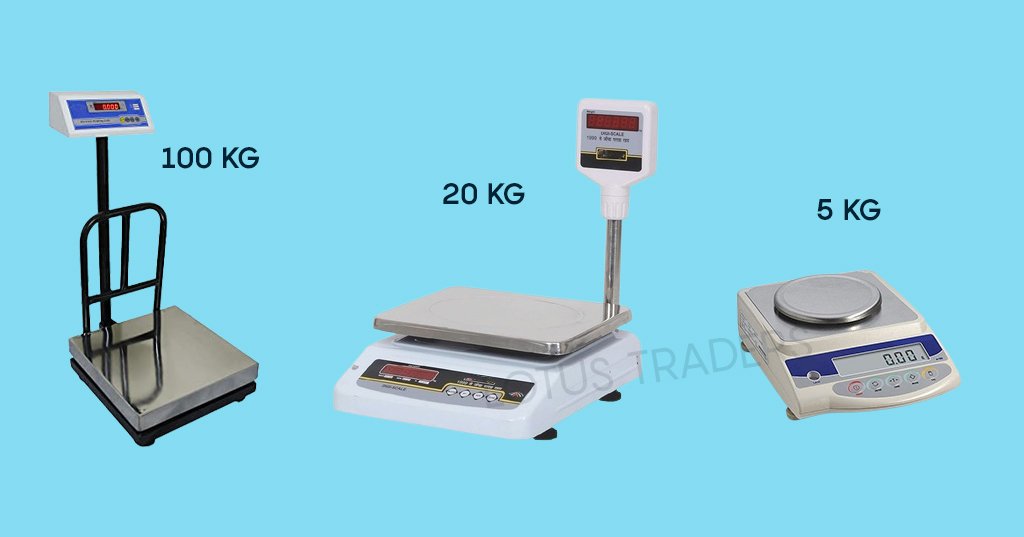Features |
Specifications |
|---|---|
|
Balance
|
20kg capacity x1g sensitivity
|
|
Weight for Tare
|
Upto 2270g
|
|
Electronic Balance Plate Scale Dia
|
280mm
|
|
Minimum Order Quantity
|
1 Piece
|
Product Description - Electronic Balance
What is Electronic Balance / What is a Electronic Balance ?
Electronic balance is an instrument used in the accurate measurement of weight of materials. Electronic balance machine is a significant instrument for the laboratories for precise measurement of chemicals which are used in various experiments. Laboratory electronic balance provides digital result of measurement.
Electronic Balance laboratory apparatus uses
Some of the application areas for electronic balance for laboratory are pharmaceutical research, scientific research, industrial, food research, educational research and others. On the basis of types of products electronic balance in laboratory can be classified into top loading balance and analytical balance.
Electronic balance helps to produce repetitive result with great accuracy in research.
How to use Electronic Balance?
Electronic Balance allows the user to quickly and accurately measure the mass of a substance to a level of accuracy impossible for traditional balances to achieve. This is especially important in experiments that require precise amounts of each substance to achieve the desired results. The popularity of the electronic balance is also due to its extreme ease of use for any skill level.
The precision of the electronic balance relies on minute factors and wind, shaky surfaces, or similar forces will cause the readings to be inaccurate. So make sure to place the balance on a flat, stable surface indoors.
An electronic balance is used to measure the mass in kilograms, grams or milligrams.
To get an accurate reading from an electronic balance:
Place the electronic balance on a flat level surface.
Calibrate it with a known mass. Make sure it reads zero when there is nothing on the balance.
Press the “ON” button and wait for the balance to show zeroes on the digital screen.
Use tongs or gloves to place the empty container you will use for the substance to be measured on the balance platform. Fingerprints and other greases from your hands add mass and must be avoided for accurate measurements.
Press the “Tare” or “Zero” button to automatically deduct the weight of the container from future calculations. The digital display will show zero again, indicating that the container’s mass is stored in the balance’s memory.
Carefully add the substance to the container. Ideally this is done with the container still on the platform, but it may be removed if necessary. Avoid placing the container on surfaces that may have substances which will add mass to the container such as powders or grease.
Place the container with the substance back on the balance platform if necessary and record the mass as indicated by the digital display it.
Capacity and features of Electronic Balance

100 kg Electronic Balance Specification |
Features |
|---|---|
|
Material
|
Iron
|
|
Weight Limit
|
100kg
|
|
Item Dimensions LxWxH
|
63.5 x 45.7 x 40.6 Centimeters
|
|
Accuracy
|
|
20 kg Electronic Balance Specification |
Features |
|---|---|
|
Material
|
Metal
|
|
Item Weight
|
9.9 Kilograms
|
|
Accuracy
|
|
5 kg Electronic Balance Specification |
Features |
|---|---|
|
Material
|
Steel
|
|
Weighing Capacity
|
5 kg
|
|
Accuracy
|
|
Types of Error with electronic balance uses in laboratory
1. Sensitivity Error
This shows a difference in the value measured by the electronic balance and the correct value. Typically, this is expressed in terms of the divagation at dimension points near the balance capacity (outside mass measurable). As an extreme illustration for a balance with a 200 gram capacity, if a 200 g weight is placed on the visage but the balance displays a value of 160 g, the perceptivity error at 200 g is-40 g. This indicates that the divagation is distributed proportionally as error over the entire dimension range.
For illustration, a dimension at 100 g is half the weight of 200 g, so it would include half the error of 200 g, or-20g. Perceptivity error occurs grounded on how directly computations are performed when force is converted to mass, as described over in How Electronic Balances Work. The system used to convert force to mass is always described in instruction primers and is appertained to as perceptivity adaptation, estimation, or span adaptation.
Placing the balance in different locales can results in variations in gravitational acceleration or variations in room temperature that can affect conversion. Perceptivity error can increase or drop depending on how druggies acclimate perceptivity.
2. Linearity Error
If the error included in balance dimension values was only the perceptivity error described over. Still, in reality that isn’t the case. That’s because there are other types of error besides perceptivity error. One similar error is linearity error, described in this section. The relationship between perceptivity error and linearity error is explained in Figure 1. (It shows an illustration of an especially large error for elucidative purposes.)
Assuming the dimension value for a 200 g weight on a 200 g balance is indicated as 160 g ( perceptivity error of-40 g), also measures of 100 g should include a commensurable perceptivity error element of-20 g, performing in a dimension value of 80 g. In other words, measures should fall along a straight line connecting the dimension at 200 g and the origin (the perceptivity line of the balance).
The area between this balance perceptivity line and an ideal line with zero error represents the perceptivity error element. Still, in reality, measures occasionally don’t fall along the balance perceptivity line. For illustration, if the dimension value for 100 g was 50 g, also it includes an fresh error of-30 in addition to the 80 g indicated by the balance perceptivity line. This fresh error element is appertained to as the linearity error. Linearity error occurs due to the state of the balance itself or its original performance position. (This value is indicated in the instruction homemade specifications included with each balance.)
Thus, this error position can not be reduced by the stoner. Nonetheless, the perceptivity error element can be minimized by duly conforming the perceptivity. It’s important to determine the composition of error in balance dimension values. In other words, it’s important to determine what element of error is due to perceptivity error and what element is due to linearity error. To use the balance duly, rather than assuming the balance has conked just because the error is large, it’s extremely important to always consider whether the error is due to perceptivity error or not.
3. Repeatability
Repetition refers to the degree to which the same dimension value is attained when constantly measuring the same thing and is an suggestion of perfection position. It expresses the variability of dimension values in terms of standard divagation or band range.
Repetition depends on the status of the balance itself and original performance position, but it also depends on how it’s used ( similar as the holders used for measures) and the terrain ( similar as goods from air inflow or static electricity).
4. Eccentric Error
This error occurs due to where the item is placed on the visage. In the case of round kissers, this is expressed as the difference in dimension values attained when an item is placed half a compass down from the center, in 45- degree directions ( frontal leftism, frontal right, hinder right, and hinder leftism), compared to the dimension at the center. Eccentric error depends on the status of the balance itself and its original performance, but can be significantly reduced by being careful to place loads in the visage center.
Causes and Corrective Measures for Error
By understanding how error occurs and the factors that cause it, methods of minimizing error become apparent. The following describes some of the main factors that cause error, along with measures to minimize them.
1. Gravitational Acceleration
The biggest factor causing perceptivity error is gravitational acceleration.
This miracle is due to the difference in gravitational acceleration performing from the difference in latitude. In other words, a perceptivity error occurs, where the balance dimension values come lower as you move south and larger as you move north.
Gravitational acceleration isn’t only affected by latitude, but also by altitude as well.
The important point then is not about how important of a perceptivity error occurs for a given movement of the balance, or by a given change in bottoms of a structure, rather the point is that perceptivity should be readjusted whenever the balance is moved, indeed for short distances.
2. Temperature
The second biggest factor causing perceptivity error is temperature. Temperature variations in the balance itself can beget perceptivity error. Electronic balance specifications always specify a temperature measure for perceptivity. This value indicates how important balance perceptivity error occurs for each degree change in temperature. The following illustration of an logical balance shows how important the display value can vary.
One of the factors that causes balance temperature to change is room temperature. However, you may suppose there’s no problem with temperature, but the balance itself doesn’t change temperature as snappily as the room temperature, If your laboratory temperature stabilizes snappily to an applicable temperature each morning. It takes a long time for it to gradationally acclimate to temperature changes
3. Containers
If the container has a lower temperature than the weighing chamber, the air in the container is heated by the interior of the weighing chamber, Still, the air in the vessel is hotter by the innards of the importing chamber, causing the air to expand and overflow from the vessel, If the vessel has a lower temperature than the importing chamber. Thus, the indicated value on the balance gradationally creeps lower.
4. Air Flow
It’s easy to imagine how the ray of a mechanical importing balance could change when exposed to external air inflow. The same thing applies to electronic balances as well. The presence of air inflow can beget worse stability and repetition or other consequences. To minimize convection, it’s necessary to keep in mind to let particulars being measured completely acclimate to the balance temperature, to avoid fitting hands into the importing chamber, to place or remove particulars being measured in as short a time as possible, and to avoid opening the importing chamber door further than necessary.
In addition, to minimize temperature differences between inside and outside the importing chamber, we recommend leaving the importing chamber door open a many millimetres when the balance isn’t in use. Still, no matter how careful you are, it’s delicate to fully suppress convection. Thus, to minimize its effect, don’t let particulars being measured protrude from the visage. Success comes from paying attention to details, similar as folding the edges of importing paper.
5. Static Electricity
Stationary electricity, which appears when the air starts getting dry, can electrically charge maquillages, plastic or glass holders to beget the balance display value to be unstable and beget repetition to come worse. However, but not when importing weights, also the cause is likely static electricity, If a problem occurs only when importing an factual sample.
Electronic balance error was bandied over. Hopefully, this will be helpful to those that read it. In addition to the causes mentioned over, there are a variety of factors that can beget crimes, similar as vibration and the viscosity of the particulars being measured. Those will be bandied in a unborn composition, as occasion allows. Next, we will give a brief preface to diurnal examination of balances.








